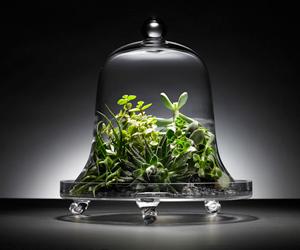Researchers have developed a tiny graphene sensor that can be taped to plants to measure the time they take to move water from their roots to their leaves

Researchers have developed a tiny graphene sensor that can be taped to plants to measure the time they take to move water from their roots to their leaves. "With a tool like this, we can begin to breed plants that are more efficient in using water," said one of the researchers Patrick Schnable, plant scientist at Iowa State University in the US.

Representational picture
ADVERTISEMENT
"That's exciting. We couldn't do this before. But, once we can measure something, we can begin to understand it," Schnable added. Called "plant tattoo sensor", the tool making these water measurements possible was detailed in the journal Advanced Materials Technologies.
The sensors are made with graphene oxide, a material very sensitive to water vapour. The presence of water vapour changes the conductivity of the material, and that can be quantified to accurately measure transpiration (the release of water vapor) from a leaf, the researchers found. The plant sensors have been successfully tested in lab and pilot field experiments, Liang Dong, an Iowa State Associate Professor and developer of the technology, said.
"We're trying to make sensors that are cheaper and still high performing," Dong said. To do that, the researchers developed a process for fabricating intricate graphene patterns on tape. Dong said the first step was creating indented patterns on the surface of a polymer block, either with a molding process or with 3-D printing.
Engineers applied a liquid graphene solution to the block, filling the indented patterns. They used tape to remove the excess graphene. Then they took another strip of tape to pull away the graphene patterns, creating a sensor on the tape. "This fabrication process is very simple," Dong said. "You just use tape to manufacture these sensors. The cost is just cents," Dong added.
The graphene-on-tape technology in this study has also been used to produce wearable strain and pressure sensors, including sensors built into a "smart glove" that measures hand movements. "The most exciting application of the tape-based sensors we've tested so far is the plant sensor," Dong said. "The concept of wearable electronic sensors for plants is brand new. And the plant sensors are so tiny they can detect transpiration from plants, but they won't affect plant growth or crop production," he said.
Catch up on all the latest Mumbai, National and International news here
Download the new mid-day Android and iOS apps to get updates on all the latest and trending stories on the go
Except for the headline, this story has not been edited by mid-day online. This story is published from a syndicated feed
 Subscribe today by clicking the link and stay updated with the latest news!" Click here!
Subscribe today by clicking the link and stay updated with the latest news!" Click here!







